Best 10x50 Binoculars for Astronomy
I recently received this BinoWizard question from a reader looking to acquire a pair of mid sized binoculars for star gazing:
 Question:
Question:
BinoWizard – After perusing your excellent site I’d like to solicit your advice on a pair of binoculars for star gazing.
Objective: In preparation to spec out and purchase a telescope for me and my family, I thought we’d “start small” so to speak with a pair of high quality binoculars. We are not interested so much in daytime viewing / birding and are primarily concerned with astronomical observation. Mostly we’d like to observe the planets/moons of our solar system, though I read that good binos can actually be preferable to a telescope for looking at globular clusters, constellations and are even okay for observing large galactic objects like Andromeda.
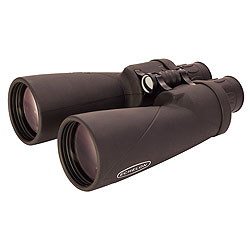 Budget: $1,000 or so. I prefer to buy high quality (design/material/build quality) from the get go – going cheap never pays. I take to heart your advice on getting the best coatings and glass.
Budget: $1,000 or so. I prefer to buy high quality (design/material/build quality) from the get go – going cheap never pays. I take to heart your advice on getting the best coatings and glass.
Location: We live 30 miles outside of New York, so the light pollution is moderate. I don’t have a bona fide Bortle rating, but I’d say 5.
Personal: 1) I wear glasses (near sighted) so eye relief will be important, 2) this will be my first ownership of an optics product, so I really don’t know much!
Selection Thoughts So Far: Since I plan to get a telescope I don’t think the big aperture binos make sense. I was thinking 50mm. I don’t care too much about porro vs. roof, but it seems like porro is generally better value. As for magnification I was leaning towards 10x.
Candidates: After doing some investigation (including your excellent site) I was moving towards something like the Fujinon Polaris 10x50s. Then I thought, hey, for $10 I should get the thoughts of an expert before I buy!
Accessories: On a related note, I thought a tripod of some kind would probably be a good idea. I see elsewhere on the site you recommend the Vanguard Alta Pro 263AT Tripod. Is that a good option here? I think the deck chair / tripod approach is what I might try! Any other accessories you would recommend?
Answer
Thanks so much for sending your question in to me through the BinoWizard, It is obvious that you have already done some research, read my page on binoculars for astronomy and thus the very detailed brief that you have provided really does help and thus hopefully I can offer you some worthwhile suggestions and advice:
10x50 Binoculars for Astronomy
I really like it that you are selecting your astronomy binoculars as a device to compliment a telescope and not instead of one. This is wise as both will offer different benefits for your interest. Telescopes are great for getting much more detailed views of objects and binocs, especially mid-sized and mid-powered ones like a 10x50 are far better for scanning the sky and getting better, but easier to use general view.
Do you need a Tripod?
Whilst far more lightweight and smaller than giant astro binoculars, a 10x50 binocular is perfectly fine for most people to hand hold and get a reasonably steady image (especially for terrestrial use), but I do think your decision to get a tripod is a good one:
This is because when you are observing the night sky, the angles are often awkward and as you are often looking at really distant and sometimes tiny (in the view) objects for longer periods of time any tiny movement does negatively affect the view. You also mention that this is a hobby that you and your family will be enjoying together and thus once you have found the planet, star, cluster or galaxy that you are after, a good tripod setup enables you to lock onto it and then much more easily share that view with the other members of your party.
Here, whilst test tripods is not my speciality, I have used quite a few and I have nothing but good things to say about the Vanguard Alta Pro 263AT Tripod and do highly recommend it.
10x50 / 10x70 Configuration?
As you have decided that you are going to get a tripod and as you say that you are not really interested in birding etc in the daytime, then there is a part of me that wonders if there maybe a better choice than a 10x50 binocular for your needs. Let me explain my thought process here:
Whilst there is no doubt that the 10x50mm setup is a popular one as it offers a good cross over for people who want a binocular with a slightly larger aperture and thus more light gathering than your typical 42mm instrument, but is at the same time, one that is still just about small enough to carry about in the field for terrestrial use.
With a 10x50 binocular you end up with an exit pupil of 5mm, which for night time use is fine, but not quite as good as say for example the 7mm offered by a 10x70 configuration. This larger diameter channel of light leaving the eyepiece will mean that for many people it will appear to offer a brighter image at night (assuming all else on the instrument is equal) as your pupils will likely be about the same size as this exit pupil. On top of this you don’t really need to worry about extra size and weight of the instrument if you are setting it up on a tripod and in a static location.
So if you take a look at the comparison table below, I have taken the liberty of adding a couple of 70mm configurations to highlight certain differences and perhaps give you a little more food for thought.
Roof / Porro Prism
The main benefits of most a roof prism binoculars over porro prism ones is that the shape of the prism allows for a much more compact body design, which is highlighted by dimensions on the couple of examples that I have added to the table below for comparison.
However on the down side, these prisms is that they do require a number of special coatings to offer the same performance level of an equal quality porro prism design. Although in your budget this is not really a factor as the best roof prism bins will (should) contain both dielectric mirror coatings and phase correction coatings to bring them up to the level of the best porro prisms.
So for me and at your budget, a lot of it will just come down to personal preference and to some extent your desired use for them: If you take a look at the options that I have listed below, all the porro prisms use an individual eye focus system. This is where you rotate each eyepiece to get the correct focus for each of your eyes. Once set the focus will be sharp at infinity and requires no further adjustment, which for astronomy and long-range observation is ideal as you never really need to focus on nearby objects.
The roof prism models have a separate diopter and focus adjustments on them. So when you first get your binos, you adjust and then set the diopter to allow for any differences in vision between your eyes (see my article on How To Calibrate & Focus Binoculars). You then use the focus wheel which enables you to more quickly and easily adjust the focus for different distances. This is great for general use as for example you can quickly switch from observing a bird in a nearby bush, to a eagle soaring up high in the sky.
Note: Both systems will require adjusting if your other family members have different vision requirements to yours. However both should be about the same in terms of time/difficulty to do once you get used to the method. I would put markings on each persons settings, so you can make the changes very quickly and without having to re-calibrate each time.
Binocular Comparisons
Before choosing on a specific instrument, I have always found it useful to make a table to make it easy to compare the most important features and specifications on similar instruments. I go over this process in more detail in my article on how to choose between different binoculars, but as your “BinoWizard”, I have created one for you below 🙂
highlighted in green are the features or specifications that I feel are either strong points or aspects that are above and beyond what I would expect to find in this price range.
highlighted in red are weaker aspects when compared to the others on the list. Note: this does not mean that this is bad, only that in this area they not quite as good as the best.
My Recommendations:
Based on the table above, below are the instruments that I would recommend adding to your short list and am sure that any would suit your needs:
Fujinon Polaris 10x50 FMT-SX Binoculars
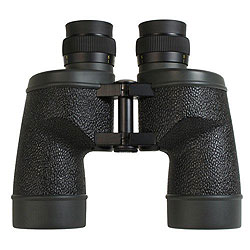 I think your current candidate of the Fujinon Polaris binoculars is really good one. Whilst I have not been fortunate enough to try out a pair for myself, this brand has a very good reputation within the astronomy community and I have read and heard many good things about this particular series.
I think your current candidate of the Fujinon Polaris binoculars is really good one. Whilst I have not been fortunate enough to try out a pair for myself, this brand has a very good reputation within the astronomy community and I have read and heard many good things about this particular series.
Highlights
For a 10x binocular, these have a nice wide field of view (339ft @ 1000yds ), which for scanning the skies looking for an object is only a good thing.
From past experience with the brand and as I say from what I have read, the quality of the build is really good, which is highlighted by features like an aluminium body and the fact that they use field flattener lenses that make for a sharp image right from the center to the edges of the view, but only found on higher end products.
Concerns
As is the case with many larger porro prism binoculars, these use roll up/down eye-cups. Made from rubber, there is nothing seriously bad about this design and with 19.8mm, you get plenty of eye-relief, so you should be able to simply fold them down and use the bins with your glasses on and still get the full field of view. However I just feel that twist up/down cups are better as you can be more precise with exactly how far you want to place your eyes behind the ocular lenses and they are usually longer lasting as the rubber ones can sometimes perish along the line where you fold them down.
Other Configurations
I had thought that you should consider the 10x70
version of the Fujinon Polaris which is why I added it to the comparison table above. As I spoke about earlier, you do get a bigger exit pupil and more eye-relief. However on the negative side, it is more expensive, larger, heavier and has a narrower view.
Best Low Cost 10x50 for Astronomy
Pentax JUPITER 10x50 Binoculars
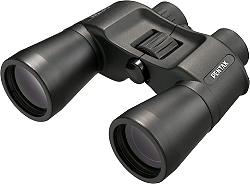 For those on a budget and looking for a cheap 10x50 binocular for astronomy, I suggest you consider these excellent looking Pentax Jupiter binoculars:
For those on a budget and looking for a cheap 10x50 binocular for astronomy, I suggest you consider these excellent looking Pentax Jupiter binoculars:
Main Features
- Field if View (at 1,000yds): 342m
- Field if View (at 1,000m): 114m
- Angle of view: 6.5°
- Eye Relief: 13mm
- Minimum Focusing Distance: 9m / 29.5ft
- Weight: 870g / 30.7oz
- Dimensions: 16.7cm x 19.9cm x 6.6cm / 6.6in x 7.8in
- Mount on Tripod with Optional Adapter
Highlights
I really like the wide field of view that these deliver, which even beats the excellent Fujinon Polaris 10x50 binoculars above.
Concerns
Having taken a look at their specifications, the only slight reservation I have with these is once again like the Fujinon above and the use of roll up/down eyecups and having only 13mm of eye-relief means I would not suggest them to anyone who needs to keep their glasses on whilst looking through the instrument.
Price Comparisons & Where to Buy:
With a price tag of under $100 in the US, 70 Euros in Europe and around £69 in the UK, these Pentax binoculars do look to me to offer good value for money and I think make a good low cost option for those getting into binocular astronomy:
Celestron Echelon 10x70 Binoculars
 If you were to consider a binocular with 70mm lenses, then rather than the Fujinon Polaris FMT-SX 10x70, I would probably opt for these Celestron Echelon binoculars.
If you were to consider a binocular with 70mm lenses, then rather than the Fujinon Polaris FMT-SX 10x70, I would probably opt for these Celestron Echelon binoculars.
I say this because they are very close to each other in terms of specifications and features, but the Celestron is both smaller and lighter (actually not far different to the 50mm Fujinon) as well as being substantially cheaper.
Whilst I have not reviewed this model, I have tested and reviewed the Celestron Echelon 20x70 binoculars, which I found to be excellent, indeed they won my award as the Best Astronomy Binocular for 2015 and they continue to be one of my favorite bins for star gazing.
So because of this I am confident that quality of both the components and the view from this 10x version will be as good as the 20x70 Echelon that I tested, with the added bonus of a wider view and a larger exit pupil.
Price Comparisons & Where to Buy:Opticron Imagic BGA VHD 10x50 Binoculars
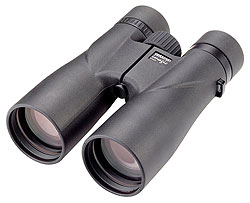 If you like the idea of a roof prism binocular, then these Opticron binoculars look to me to be a great option.
If you like the idea of a roof prism binocular, then these Opticron binoculars look to me to be a great option.
Like the Celestron above, I have not tested this exact configuration, but I have fully tested and reviewed the 8x42 Opticron Imagic BGA VHD binoculars that I to thought were excellent, so once again I can vouch for their build quality and am sure they will offer an equally good quality image.
Highlights
As you would expect at this price level, these contain the very best optical components and coatings
and their magnesium chassis means that they are not only more compact than the porro prism options, but considerably more lightweight as well. Now obviously when mounted on a tripod and if you are just using them at home, this is not really a factor, so I will leave it to you as to decide if this important.
I have already discussed how these have a focus wheel and a separate diopter adjustment which is different and more flexible for focusing on near and far objects than the to porro prism models above. Again for exclusive astronomical use, this is not really a factor. But if you did also want to take them out in the field during the day, this would be a definite advantage.
The other benefit of these over the models above is that they have twist-up eyecups and a massive 23mm of eye-relief, so I am sure you would still be able to observe the entire image even whilst wearing your glasses.
Price Comparisons & Where to Buy:I hope that this is of some help. As I say, I think your initial consideration of the Fujinon 10x50 Polaris is a great choice. However, if you are remaining at a static position and using a tripod, then I would personally opt for a binocular with the same power, but larger objectives giving you a larger exit pupil for even better night time performance.
Please let me know if you require any further advice or more suggestions
BinoWizard Feedback 01
Update: Below is the feedback that I received from Chris afterwards and I think is well worth sharing as it rounds off this article nicely:
Thanks for the excellent and thorough response to my inquiry.
After considering your comparison and recommendations, I went with the Opticron unit. I was delighted to learn that there were high quality roof prism options that might fit my application. The specification comparison in the excel table was especially helpful here. The performance specs look comparable to the other units, but the light weight does give it added flexibility. Also, the huge eye relief and the single focus control are a plus.
Thanks also for forcing me to reconsider the 10x70 option – in retrospect you are of course correct and if I didn’t jump on the roof prism option I would have gone with the Celestron 10x70s. That said, I’m also glad you thought my original choice wasn’t bad – it at least showed I was on the right track which is always heartening!
I will go ahead and get the tripod for the very reason you highlighted in your response: it will allow us to pass the view off to the next observer very easily. That said, you note on your review of the Opticron 8x42 that they need a special tripod adapter (see my advice below). Do you have a recommendation on an adapter that will work with the Vanguard Alta tripod?
The unit should arrive in a few days and we should be able to view the Jovian system and Saturn this weekend if the weather cooperates. I’ll be sure to send feedback on the unit after we’ve used it. Thanks again for your time and thoughts. You run a first rate site that is invaluable for anyone interested in binoculars whether novice or experienced enthusiast.
My Tripod Adapter Advice:
I am not sure if your larger version will be the same as the 8x42 Opticron that I reviewed where you cannot unscrew the dust cap on the front. If so, then you can get tripod adapters that wrap over the binocular, that are produced by a number of companies:
Hope this helps.
BinoWizard Feedback 02
Tripod:
I went with the Vanguard Alta Pro263 tripod mostly because the shop I went to had the photographic head for it in stock. This too has proven a great choice.
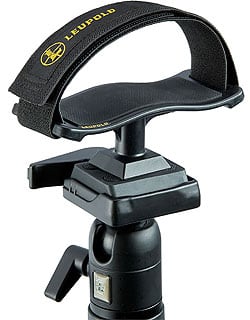 Tripod Adapter:
Tripod Adapter:
As for an adapter I ended up with this: Leupold Binocular Tripod Adapter Tray Black – MPN: 172625.
This too worked great out of the box.
Experience:
Over the last week my family and I have observed between 1 and 3 Jovian moons each clear night. This is very exciting. The eye relief on the Opticron is indeed excellent, but I have found that I can use the focus adjustment to correct for my vision so I don’t use my glasses. I actually find a little glare around Jupiter itself (this is true whether I use glasses or not), but stars and the Jovian moons are sharp and clear – even if they are observable just as pinpoints or little tiny chips. Jupiter (besides the glare) is a small disk – which is awesome!
One (small) disappointment is that the eye piece cover is way too loose and just falls off, so it can only be used when the unit is inside its carrying case.
So, the initial feedback is good, now it’s just the test of time!
Thanks again for all your help! Chris
Further Reading
- Binoculars for Astronomy
- 70mm Binoculars for Astronomy & Tripod Setup Advice
- Space.com’s Best Astronomy Binoculars 2015
- 10x50 Binoculars & Optical Components Quality
 Need Some Help or Advice?
Need Some Help or Advice?
If you are undecided as to which binoculars are best for your needs, or are confused by all the options available and don’t have the time (or don’t want to) read through my reviews, then please feel free to contact me for some personal optics advice. Ask the BinoWizard Here

 Article | Posted by Best Binocular Reviews
Article | Posted by Best Binocular Reviews 
 Categories:
Categories:  Tags:
Tags: 

